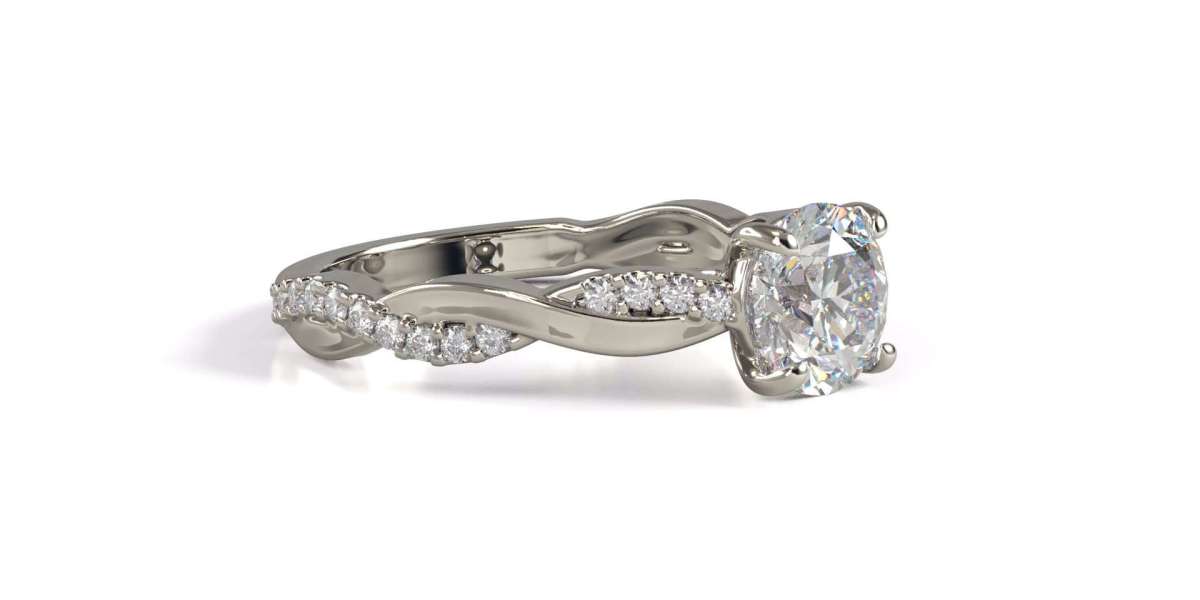An engagement ring is a beautiful symbol of love, but behind its sparkle, there’s often a bigger story—one that involves the environment, human rights, and global trade. Today, more couples are choosing ethical and sustainable engagement rings to ensure that the jewelry they wear reflects not just their love for each other, but also their values.
If you’re thinking about buying a sustainable engagement ring, this guide will walk you through what it means, why it matters, and how to make an informed choice.
1. What Does “Ethical” Mean in Engagement Rings?
An ethical engagement ring is one that is sourced and crafted in a way that respects human rights and fair labor practices. This means:
Conflict-Free Diamonds: The diamond is not linked to funding wars or violent conflict (often referred to as “blood diamonds”).
Fair Labor Standards: Workers involved in mining, cutting, and setting stones are paid fairly and work in safe conditions.
Transparency: The supply chain is traceable from the mine to the store, so you know exactly where the materials came from.
2. What Makes an Engagement Ring Sustainable?
Sustainability focuses on minimizing environmental impact during the production process. A sustainable engagement ring may involve:
Recycled Metals: Gold, platinum, and silver can be melted down and reused, reducing the need for mining.
Eco-Friendly Mining: When mining is necessary, responsible companies follow strict environmental regulations.
Lab-Grown Diamonds: Created in controlled environments with a much smaller ecological footprint.
Long-Lasting Quality: A ring that is designed to last for generations, reducing waste over time.
3. Why Ethical and Sustainable Rings Matter
Traditional mining practices can have serious environmental and social consequences:
Environmental Damage: Open-pit mining can destroy ecosystems and pollute water sources.
Human Rights Violations: In some regions, diamond and gold mining has been linked to child labor, unsafe working conditions, and funding armed conflicts.
Overconsumption: Constant demand for new materials contributes to environmental degradation.
Choosing an ethical and sustainable engagement ring helps reduce harm and supports businesses that are working for positive change.
4. Popular Ethical and Sustainable Options
If you’re looking to make a more responsible choice, here are some of the most popular options:
a. Lab-Grown Diamonds
What They Are: Diamonds created in laboratories using advanced technology.
Benefits: Chemically identical to mined diamonds, but with less environmental impact and no risk of conflict sourcing.
Cost: Often 20–40% less expensive than natural diamonds.
b. Recycled Metals
What They Are: Gold, platinum, and silver that have been reclaimed and refined from old jewelry or industrial use.
Benefits: Reduces the need for new mining and the environmental damage it causes.
c. Vintage and Antique Rings
What They Are: Pre-owned rings, often from past decades.
Benefits: No new mining is required, and they often feature unique, handcrafted designs.
d. Fairmined or Fairtrade Gold
What It Is: Gold sourced from mines that follow strict ethical, social, and environmental standards.
Benefits: Supports small-scale miners and ensures fair wages.
5. How to Verify if a Ring is Truly Ethical
With sustainability becoming more popular, some brands engage in greenwashing—making false or exaggerated claims about being eco-friendly. To avoid this, look for:
Certifications:
Kimberley Process Certification Scheme (KPCS) – Ensures diamonds are conflict-free.
Fairmined – Guarantees responsibly mined gold.
Responsible Jewellery Council (RJC) – Audits ethical practices across the supply chain.
Transparent Supply Chains: Reputable jewelers can tell you exactly where their materials come from.
Customer Reviews: Look for feedback from other buyers about the brand’s ethical practices.
6. Balancing Beauty, Budget, and Values
You don’t have to compromise on style or quality to buy an ethical engagement ring. Many sustainable jewelers offer stunning designs that rival traditional luxury pieces.
Budget Tips for Sustainable Shopping:
Opt for lab-grown diamonds—they’re generally more affordable.
Choose smaller center stones with high-quality cuts for maximum sparkle.
Consider vintage rings, which can often be priced lower than new ones.
7. Where to Buy Ethical and Sustainable Engagement Rings
Many jewelers—both global and local—are committed to ethical sourcing. Depending on your location, you can find:
Independent Artisan Jewelers who specialize in handcrafted, sustainable designs.
Online Sustainable Brands offering lab-grown diamonds, recycled metals, and full transparency.
Local Jewelers who carry Fairmined gold or conflict-free diamonds.
If you’re shopping in a city like Toronto, Vancouver, or New York, you’ll find a growing number of stores dedicated to sustainable fine jewelry.
8. Caring for Your Ring Sustainably
Sustainability doesn’t stop at purchase. Extend the life of your engagement ring by:
Regular Cleaning: Use mild soap and water rather than harsh chemicals.
Professional Checkups: Have the setting inspected annually to prevent stone loss.
Mindful Wearing: Remove the ring during heavy work or activities to avoid unnecessary damage.
Final Thoughts
Choosing an ethical and sustainable engagement ring allows you to celebrate your love without compromising your values. From lab-grown diamonds to recycled metals and vintage treasures, there are plenty of beautiful options that honor both your relationship and the planet.
When you choose consciously, your engagement ring becomes more than a symbol of love—it becomes a statement about the kind of future you want to build together. And that’s a sparkle worth cherishing forever. Discover the finest engagement rings in Toronto—where timeless design meets exceptional craftsmanship.



